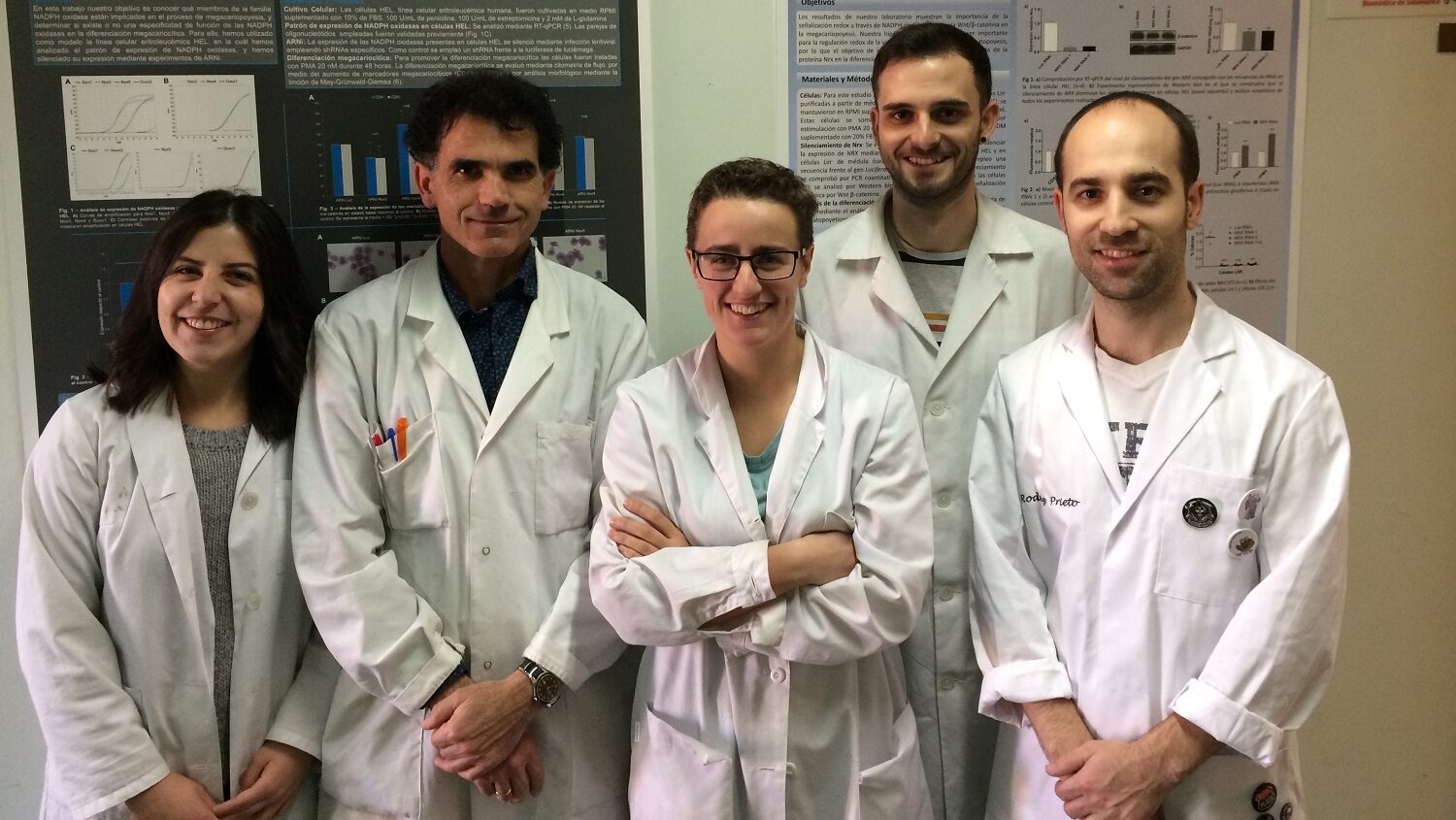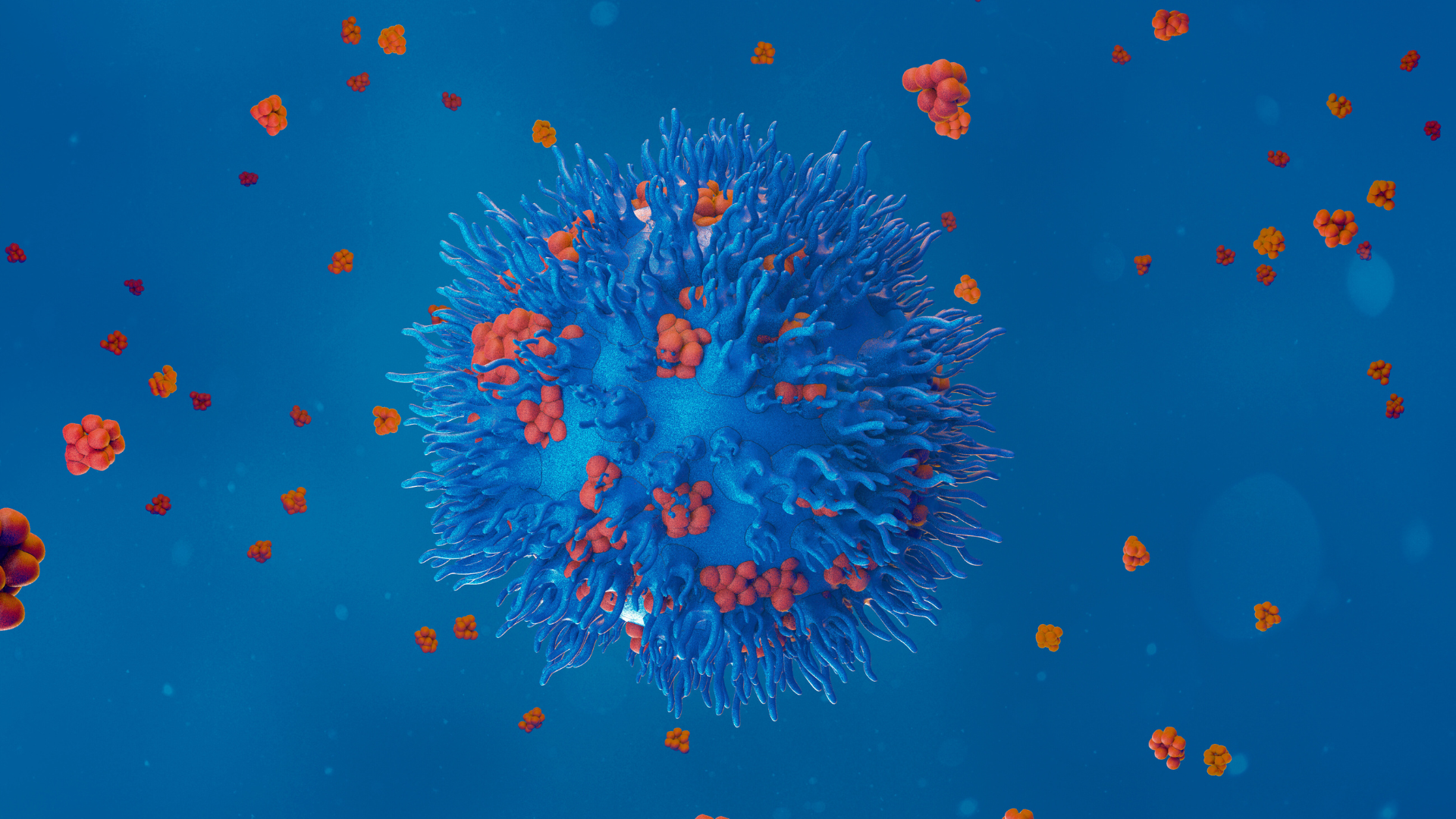Researchers from IBSAL and USAL, with the collaboration of the Hematology Service of the Hospital de Salamanca, demonstrate that the simultaneous inhibition of NOX2, of the NOX family of proteins, and of glycolysis reduces malignant cell proliferation in this hematological cancer, and also improves the efficacy of chemotherapy.
The study, validated in a panel of cell lines, in patient samples and in an animal model, and published in the high-impact journal ‘Biomarker Research’, also offers research options for treating resistance to conventional treatment.
Researchers from the Institute of Biomedical Research of Salamanca (IBSAL) and the University of Salamanca (USAL), with the collaboration of the Hematology Service of the University Health Care Complex of Salamanca (CAUSA), have demonstrated the efficacy of a new therapeutic strategy against acute myeloid leukemia, the most frequent in adults and the one with the worst prognosis.
Specifically, the study, published in the high-impact journal Biomarker Research, has shown that simultaneously blocking NOX2, of the NOX family of proteins – essential for cell communication – and glycolysis – one of the most important routes for obtaining energy from leukemic cells – slows the onset and progression of this hematological cancer, significantly reducing cell proliferation and inducing the death of malignant cells.
The research, led by the redox signaling in hematological neoplasms group of the IBSAL and the USAL, directed by Ángel Hernández Hernández, and whose first authors are Carla Ijurko and Marta Romo, also reveals that this combined inhibition improves the efficacy of conventional chemotherapy that has been used since the 1970s against this type of leukemia.
Acute myeloid leukemia: more research needed due to poor prognosis
Although it can appear at any age, acute myeloid leukemia (AML) has an average age at diagnosis of 68 years and around 1,600-1900 cases are registered each year in Spain, with an upward trend due to the aging of the population. Its poor prognosis, with an overall 5-year survival rate of 30%, requires greater research efforts to identify better diagnostic markers and the development of new therapies directed at specific targets in order to advance in early and more effective treatments due to its aggressiveness.
In this context, this IBSAL group had already demonstrated in two previous studies, also published in high-impact journals, that NOX2 expression in acute myeloid leukemia is a very important prognostic factor when related to genes that regulate cell metabolism. “Previously, we discovered a panel of genes with which we are able to determine the prognosis of patients with acute myeloid leukemia, and the next step was to ask ourselves whether we could use this information at the therapeutic level,” explains Ángel Hernández Hernández.
With this new research, they have validated the inhibition of NOX2 and glycolysis as an effective treatment against AML, both in cell line models and in primary bone marrow samples derived from patients with the disease and in an animal model.
Subgroups of patients who could benefit most from the treatment
“This latest work is the cherry on top of some very relevant results at the biological level against this heterogeneous disease and with which we demonstrate the relevance of NOX2 in the context of the energy metabolism of AML cells, not only as a fundamental prognostic factor but also as a therapeutic target,” adds the researcher.
In fact, as Carla Ijurko, first author of these three studies that are part of her doctoral thesis, explains , “we have seen that, in general, acute myeloid leukemia patients have altered NOX2 expression levels, and that, precisely, this treatment we propose is more effective the higher these levels are”. Therefore, the research also determines which subgroup of patients could benefit even more from this new therapeutic option.
Finally, the existence of a relationship between NOX2 levels and resistance to chemotherapy has also been described, so “we also propose new studies to treat patients who have been resistant to chemotherapy with NOX2 inhibitors, which is another subgroup that is difficult to treat”, concludes the researcher.
Reference articles:
- Ijurko C, Romo-González M, Prieto-Bermejo R, Díez-Campelo M, Vidriales MB, Muntión S, Sánchez-Guijo F, Sánchez-Yagüe J, Hernández-Hernández Á. Targeting NOX2 and glycolytic metabolism as a therapeutic strategy in acute myeloid leukaemia. Biomark Res12, 128 (2024) . https://doi.org/10.1186/s40364-024-00674-x.
- Ijurko C, Romo-González M, García-Calvo C, Sardina JL, Sánchez-Bernal C, Sánchez-Yagüe J, Elena-Herrmann B, Villaret J, Garrel C, Mondet J, Mossuz P, Hernández-Hernández Á. NOX2 control over energy metabolism plays a role in acute myeloid leukaemia prognosis and survival. Free Radic Biol Med. 2023 Nov 20;209(Pt 1):18-28. https://doi.org/10.1016/j.freeradbiomed.2023.10.013
- Ijurko C, González-García N, Galindo-Villardón P, Hernández-Hernández Á. A 29-gene signature associated with NOX2 discriminates acute myeloid leukemia prognosis and survival. Am J Hematol. 2022 Apr;97(4):448-457. https://doi.org/10.1002/ajh.26477
The IBSAL
The Institute of Biomedical Research of Salamanca (IBSAL) was established on March 21, 2011 through an agreement signed by the Ministry of Health of the Regional Government of Castilla y León and the University of Salamanca, which was joined in February 2012 by the Spanish National Research Council (CSIC). It integrates and coordinates the biosanitary research carried out at the University Hospital of Salamanca, the Primary Care Management of Salamanca and the biosanitary area of the University of Salamanca, including the Institute of Neurosciences of Castilla y León and the Institute of Molecular and Cellular Biology of Cancer.
Its scientific activity is structured in six areas, with a total of 84 research groups: Cancer (23 groups); Cardiovascular, Renal and Respiratory (11); Neurosciences (12); Infectious, Inflammatory and Metabolic Diseases (17); Gene and Cell Therapy and Transplants (6) and Primary Care, Public Health and Pharmacology (15).
More information and contact:
comunicacion@ibsal.es




